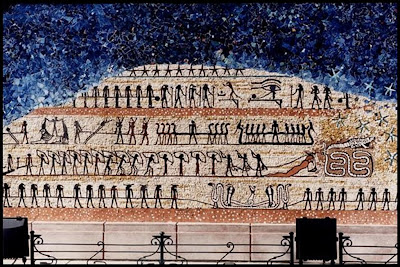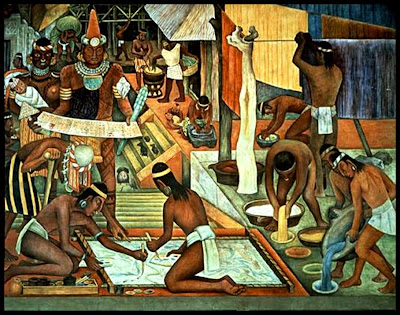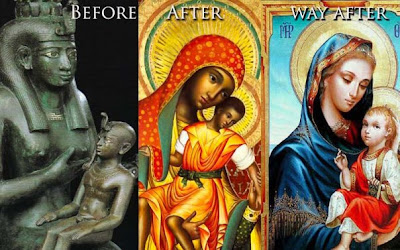Mural Painting between Nationalism and Absolute Creative Freedom..



Abstract - research Published in 2008
Not considered strange, the strong relation between the expression of nationalism & the mural painting since the early times and even now, & because the mural painting is often presented to many different kinds of people and groups, therefore it is not limited to the high class, so there is a creative dilemma to the artist, who is bound to limit his absolute freedom and take into account the tastes of different categories .. And even though he has to come out with a new creative solution, otherwise his art work would not be under the mantle of Fine Arts. ** In fact the mural painting has a message that Western countries had begun to revive since the early twentieth century, where this art is designed primarily to access to the ordinary man in the street, in demonstration of the knowledge of those communities the importance of returning once again to the cities and towns streets, Thus Murals, Trompe l'oeil & art works could be everywhere as street arts or public arts as well as what is called graffiti.
Perhaps if we look at the reasons of the importance of a state such as Mexico – which is not one of the major countries - in the field of Mural painting with its nationalism trends, and then the United States of America, but particularly on the walls of a certain category of ethnic groups as African Americans, we will find that, whether here or there or in other marginalized and poor societies alike who have illegally made their own graffiti.. We will find that there is something in common among all of them, that, as the world is getting smaller as the gap between north and south becomes bigger, meaning: power and weakness, richness and poorness, and this is ironic .. thus, it is assumed that the world as smaller as it gets, its poles should be closest, but in contrary to what is happening on the ground, where there is a first world, second and third .. So, perhaps because of this failing justice such grinded communities need to reflect their own oppression even only in their arts, and, most important are trying to grasp & hold their own origins & identities.
** Meanwhile, one of the most really significant matters in the Western community in arts generally & in mural painting especially is the diversity & opened minds of issues and trends in such works, we can find decorative styles, realistic, abstract, landscape, including nationalism issues or even multi free styles, all are provided within continuous coordination between artist & different official authorities in order to be positive that these arts would not affect the society negatively.
** It is within the encouraging of strong supporters of globalization and the deployment of U.S. model in the entire world through all possible media, especially since the nineties of the twentieth century, after the U.S. success in toppling the Soviet Union, when the art has become a cultural commodity that must have a U.S. stamp, non-local but global styling so any person in the world can taste, and accept.
** So, no place, no borders, assets or roots, but it is one world, despite the collapse of the social justice in that world, and the artist must be looking for a way that makes him a part of this system of globalization, even melting in it; but in return, many Artists in the entire world remain, even in the United States itself, are resisting these forces and overwhelming power in order to firm their roots & identities.
** In Egypt, after years of founding the division of mural painting in the mid-seventies at the Faculty of Fine Arts in Cairo by the great Artist Hamed Nada, this art began to be more serious and profound, both in technical and substantive terms, before that time murals in most cases were nothing but decorative & shallow works either in line with Islamic culture which was known as the "oil culture" that prevailed in the seventies or some ancient Egyptian (Pharaonic) works, especially in the monumental & tourist areas.
** What happened in most contemporary Egyptian artists murals that the idea has matured and followed the known academic methods and techniques newly abroad .., these Egyptian artists had their special way in the search for Egyptian and Eastern identity in their own works of painting, which had an impact on their works of mural painting.
** Those known artists such as Ahmed Nabil, Abdul Salam Eid, Sabry Mansur, Mohamed Shaker & Mohamed Salem, despite the fact that their works are successful, respected and dealt with different methods in line with the whole modern era, testing, experimenting as well as keeping their national heritage touches; However, the researcher is not inviting or making a propaganda to revive the national spirit in the modern Egyptian mural painting in general, In fact the absolute nationalism art works if will be spread over and over again, particularly under the circumstances of the proliferation of mural painting itself in Egypt, it will become futile, like deployed posters on the roofs, walls and fences without awareness, It may also threaten the credibility of the artist in front of the humble citizen who is culturally penniless, socially and economically exhausted, he would become sick of these repeated art works, which is leading to an important question: Does every work of mural painting in Egypt must be characterized by a nationalistic symbols & design or is it also possible not to adhere to such ideas, therefore the artist may have different solutions & issues to present ..,& that is what we will try to answer by the following conclusions.
** Conclusions:
1 – One can not find in any way that such national and moral missions are an obligation to the artist or even administrations, who aim to disseminate arts in the community, Thus art in general and mural painting in particular has different functions depending on locations, environment and many other factors, for instance, a mural inside a shopping mall or a nightclub or children or public park or so places do not necessarily need such missions.
2 - As overcrowding has become one of the most significant features of Egypt, abstraction in art would be one of the most incentives for the use of simple designs in order to allay the pace of the rush, if there was in the first place a need for an art work in a crowded place or location.. like in under bridge or in a tunnel where vehicles are speeding or other similar critical places which simply require very, functional and artistic treatment.
- Abstraction has always been a common feature in the Egyptian arts since ancient times as the Egyptian visual language memory was adequate to abstract and even creative within it, thus this language could be familiar & acceptable to the humble citizen, without even understanding the content or the message in the art work, it is not necessarily here to these art works to present nationalism or biome features, but can not necessarily be out of job, meaning that, if the artist ever suggest a negative impact or bleak impression or personal criticism directed at a certain ethnic, ideological, intellectual group, all this must be rejected at a general level; thus, if the West continues trying to deter such behavior and even consider some arts as terrorist, how can we be negative while we are coordinating work collectively for alleged civilization, So the issue here is broad and flexible, meaning that many creative solutions can be possible but within management, which means that absolute creative freedom in the mural painting is not available.
3 – Public arts in general, as well as the equivalent of education, culture, media & an economic boom, within all of them & the mural painting - nationalism or non-nationalism trend - if we as a society can respect & benefit the good function of it in the right place in the right way, it can fill an important gap which had ballooned when visual artist lived isolated from his community, badly that movies dealt with such matter with tragedian scenarios ; Despite the continuous human progress in time & in thought, but the artist in ancient times was not living this isolation like he does now; on the other side, we find that the simple citizen is living in his own country isolated from his heritage and historical background hardly knowing the name of his third grandfather, how would he know about his ancient ancestors?! .. Such works can be the first step toward the exchange of interests and knowledge, it would be a social partnership in all fields and areas, & would emphasize the psychological health of human side by physical and mental health.
4 - If the world around us and as already mentioned at the beginning of the research is actively towards spreading the language of art in their communities, whether by individual responses or by the central ruling authorities there., all of this should not adversely affect artists in their own exhibits & galleries where absolute creative freedom should be available, these two Channels should be always parallel to each other, it is possible to find some exchange of influences between here and there, but in the end, both in its course .. taking the chance.
Dr.Zeinab Nour
Artist & lecturer
At the Faculty of Fine Arts
Helwan University - Cairo
http://zeinabnour.artistportfolio.net/



Comments